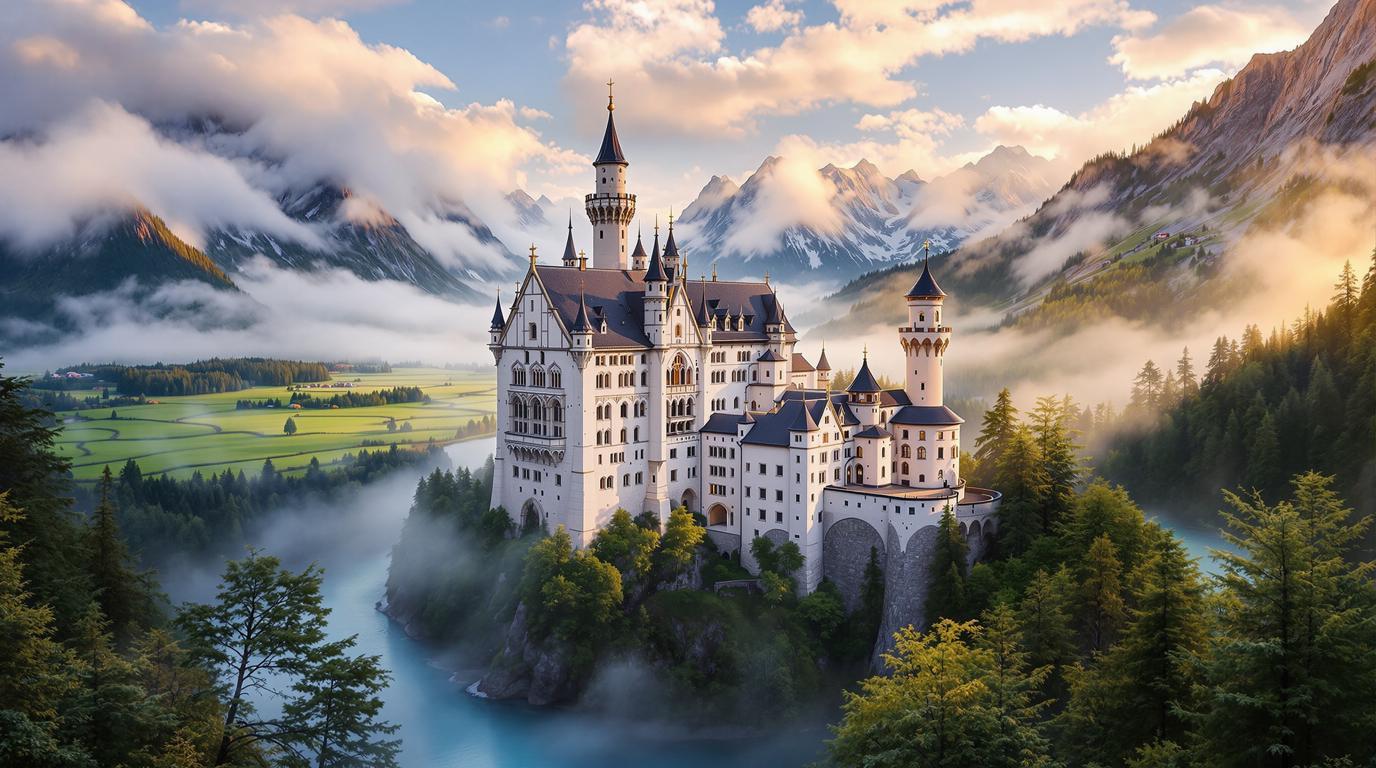Most visitors to Germany don’t realize that the world’s most photographed castle was never completed. Perched dramatically on a rugged hill above Bavaria’s lush forests, Neuschwanstein Castle attracts over 1.3 million visitors annually, despite being only 30% complete when its visionary creator died in 1886.
A royal fantasy frozen in time
King Ludwig II commissioned this extravagant palace not as a display of power, but as a personal retreat where he could escape into medieval romanticism. The “Fairytale King” was obsessed with Wagner’s operas and medieval legends, pouring his inheritance into creating a fantastical castle that would later inspire Walt Disney’s Sleeping Beauty Castle.
“Ludwig built Neuschwanstein as his personal refuge from reality,” explains historian Marie Hoffman. “He wanted to live in a world of knights, maidens, and epic sagas — a dream that bankrupted his family.”
14 rooms of technicolor splendor
Though massive from the outside, only 14 rooms were completed before Ludwig’s mysterious death. The guided 30-minute tour reveals astonishing technological innovations hidden behind medieval-inspired decor. The king installed central heating, running water, and an automated food elevator — all cutting-edge for the 1880s.
The Throne Room stands as the castle’s masterpiece: a Byzantine-inspired hall with a floor mosaic containing over two million stones and a 4-meter chandelier resembling a Byzantine crown. Ironically, the massive throne depicted in the room’s murals was never built.
The artificial cave that stunned 19th-century guests
Perhaps the most unexpected feature is the artificial grotto between the study and living room. This man-made cave complete with stalactites and a small waterfall showcased Ludwig’s eccentricity and innovation. The grotto originally featured color-changing lights powered by one of Bavaria’s first electrical systems.
“When you stand in Ludwig’s grotto, you’re experiencing 19th-century virtual reality,” says tour guide Hans Weber. “Just as we have immersive experiences today, Ludwig created physical spaces that transported visitors into Wagnerian opera scenes.”
The photo spot that’s worth the climb
For the quintessential castle photograph, brave travelers should hike to Marienbrücke (Mary’s Bridge), a wrought-iron bridge spanning the 90-meter Pöllat Gorge. This precarious viewpoint delivers the postcard-perfect angle captured in millions of Instagram posts. Just be prepared to share the narrow bridge with hundreds of other photographers during summer months.
For a more secluded experience similar to Easter Island’s mysterious moai statues, visit during shoulder seasons (March-April or October-November) when fewer crowds allow for more contemplative exploration.
Beyond the castle walls
The surrounding Bavarian Alps offer spectacular hiking opportunities. The ascent to Tegelberg provides aerial views of both Neuschwanstein and neighboring Hohenschwangau Castle (Ludwig’s childhood home). This alpine wonderland rivals the natural beauty of Mount Kilimanjaro’s diverse ecosystems.
After castle exploration, unwind in the medieval town of Füssen, just 4km away. Its cobblestone streets, Baroque churches, and authentic Bavarian restaurants offer a charming conclusion to your fairytale adventure.
Essential visitor information
Entry to Neuschwanstein costs €21 per adult and requires advance reservations, especially during summer months when tickets sell out weeks ahead. The 40-minute uphill walk from the ticket center can be challenging, though horse-drawn carriages offer a romantic (if pricey) alternative.
“The castle receives 6,000+ visitors daily in peak season. Book your time slot at least three weeks in advance or risk disappointment,” advises tourism director Eva Müller.
Unlike Turkey’s Pamukkale thermal pools or Brazil’s dolphin-inhabited beaches, Neuschwanstein doesn’t allow free exploration – all visits are guided tours only. Photography inside is prohibited, preserving the magical atmosphere of rooms that have inspired imagination for over a century.
For hikers seeking additional adventures, the region offers stone pathways reminiscent of the ancient footpaths of Greek islands. These trails connect hidden alpine lakes and meadows with spectacular castle views few tourists ever discover.
